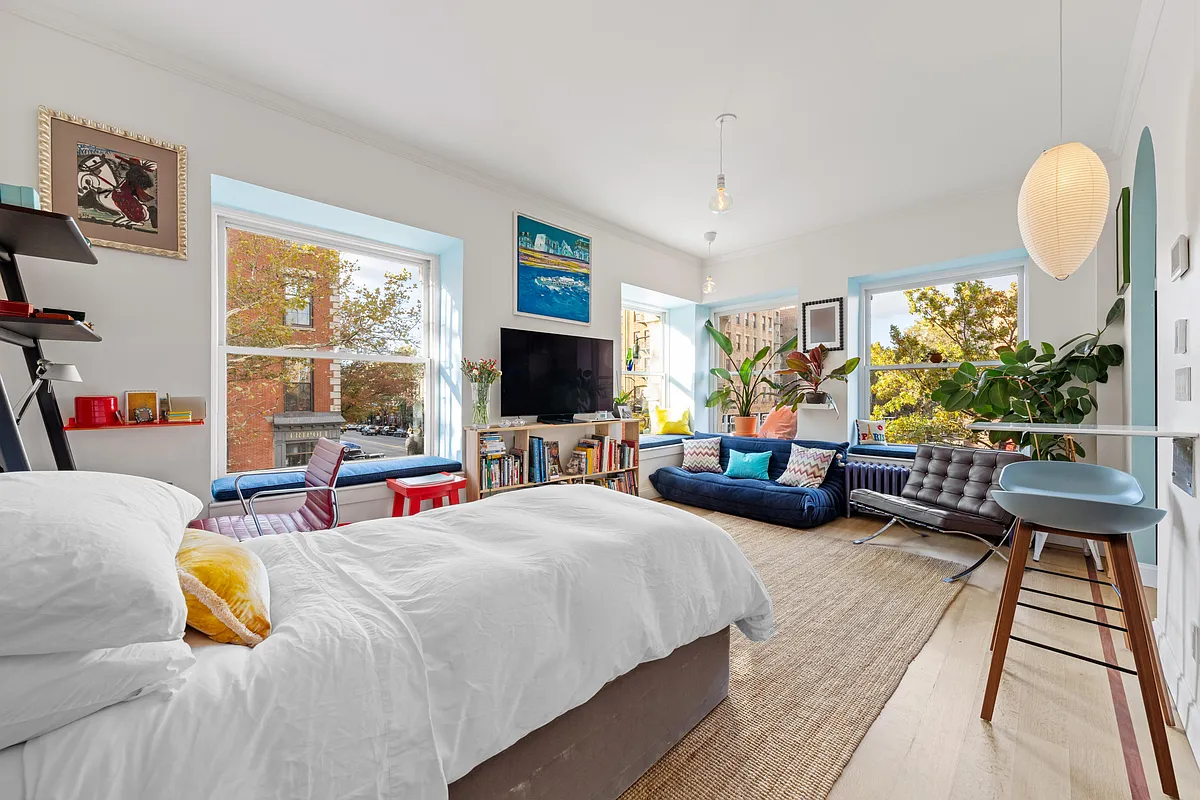How the Financial Crisis May Not Be So Bad for New York
We just got around to reading the cover story of the current issue of The Atlantic Monthly called How the Crash Will Reshape America. One of the article’s central points is that while hubs of intellectual and creative capital like New York will surely suffer in the economic crisis, they will suffer a lot less…


We just got around to reading the cover story of the current issue of The Atlantic Monthly called How the Crash Will Reshape America. One of the article’s central points is that while hubs of intellectual and creative capital like New York will surely suffer in the economic crisis, they will suffer a lot less than second-tier cities, the suburbs or industrial areas and therefore benefit on a relative basis. While there has been much hand-wringing about New York’s reliance upon the finance industry, many other smaller cities, it turns out, are much more reliant: Hartford, Des Moines and Charlotte, to name a few. Rather, New York is an incredibly diverse place which should be well-positioned to reinvent itself faster and more efficiently than other places:
New York is much, much more than a financial center…It is home to a diverse and innovative economy built around a broad range of creative industries, from media to design to arts and entertainment. It is home to high-tech companies like Bloomberg, and boasts a thriving Google outpost in its Chelsea neighborhood… New York is more of a mecca for fashion designers, musicians, film directors, artists, and—yes—psychiatrists than for financial professionals…The financial crisis may ultimately help New York by reenergizing its creative economy…Place still matters in the modern economy—and the competitive advantage of the world’s most successful city-regions seems to be growing, not shrinking…Talent-rich ecosystems are not easy to replicate, and to realize their full economic value, talented and ambitious people increasingly need to live within them…Economic crises tend to reinforce and accelerate the underlying, long-term trends within an economy [like the map of per capita patent creation above]… In this case, the economy is shifting away from manufacturing and toward idea-driven creative industries—and that, too, favors America’s talent-rich, fast-metabolizing places.
Sounds good so far, right? Here’s how the trends will play out on the American landscape, according to the author Richard Florida:
What will this geography look like? It will likely be sparser in the Midwest and also, ultimately, in those parts of the Southeast that are dependent on manufacturing. Its suburbs will be thinner and its houses, perhaps, smaller. Some of its southwestern cities will grow less quickly. Its great mega-regions will rise farther upward and extend farther outward. It will feature a lower rate of homeownership, and a more mobile population of renters. In short, it will be a more concentrated geography, one that allows more people to mix more freely and interact more efficiently in a discrete number of dense, innovative mega-regions and creative cities. Serendipitously, it will be a landscape suited to a world in which petroleum is no longer cheap by any measure. But most of all, it will be a landscape that can accommodate and accelerate invention, innovation, and creation—the activities in which the U.S. still holds a big competitive advantage.
Sounds like we’re sitting pretty, huh?
How the Crash Will Reshape America [The Atlantic]





“New York is much, much more than a financial center…It is home to a diverse and innovative economy built around a broad range of creative industries, from media to design to arts and entertainment. It is home to high-tech companies like Bloomberg, and boasts a thriving Google outpost in its Chelsea neighborhood… New York is more of a mecca for fashion designers, musicians, film directors, artists, and—yes—psychiatrists than for financial professionals…The financial crisis may ultimately help New York by reenergizing its creative economy…Place still matters in the modern economy—and the competitive advantage of the world’s most successful city-regions seems to be growing, not shrinking…Talent-rich ecosystems are not easy to replicate, and to realize their full economic value, talented and ambitious people increasingly need to live within them…Economic crises tend to reinforce and accelerate the underlying, long-term trends within an economy [like the map of per capita patent creation above]… In this case, the economy is shifting away from manufacturing and toward idea-driven creative industries—and that, too, favors America’s talent-rich, fast-metabolizing places.”
This is “Retarded Delusion”! If you think that New York is in it’s own “Cocoon” you are going to get punished for that mistake. Our Banking System is Insolvent, we have large Banking figures who are fugitives from the law after finding out they was running Ponzi Schemes.
Latin Americans fret as Stanford crisis spreads
http://www.reuters.com/article/marketsNews/idUSN1845098120090218?pageNumber=2&virtualBrandChannel=0
“Stanford Fondos has been licensed to operate in Mexico since 2005. The country’s bank regulator said that as of Nov. 2008, Stanford had sold investment stocks worth roughly $45 million to some 3,400 clients in Mexico.
“Yesterday, our advisor called us at 1 a.m. and told us he could not believe it,” said Maria Esther Azuela, a housewife in her mid-sixties. “This is a big blow.”
And here is a video from Rick Santelli!
Trader Buzz & Rick’s Rant
http://www.cnbc.com/id/15840232?video=1039849853&play=1
I want you to continue on living the lie. I want to believe the garbage and make decisions that will kill your financial future…..
The What
Someday this war is gonna end…
Probably nothing better to do!!! 🙂
i say to all of this–no shit sherlock
why all the picking on 11217 and Rob today???
Squatter….seems you have an obsession with your passion for Argentina. It’s getting old.
please forgive 11217—he is too busy researching real estate in Buenos Aires for purchase to comment appropriately. You see, he knows a great deal about Argentine culture as a result of 4 weeks there and a Berlitz handbook. Se va a perder su remera…lol
Retirees are moving to the south; not productive people. Unless of course you’re getting called back to the head office of the tobacco company.
Hey PropJoe, welcome. Get dissed by any Hasidic women on the train today???
“People from the south are staying there. People from the north are moving to the south.”
Yeah I get it. Sounds good to me! Anyone who does not want to be HERE should move south, and anyone who is originally FROM the south should STAY there. More sidewalk for me!
“I do you want to see me? :)”
You’re right about this part – I don’t get it.